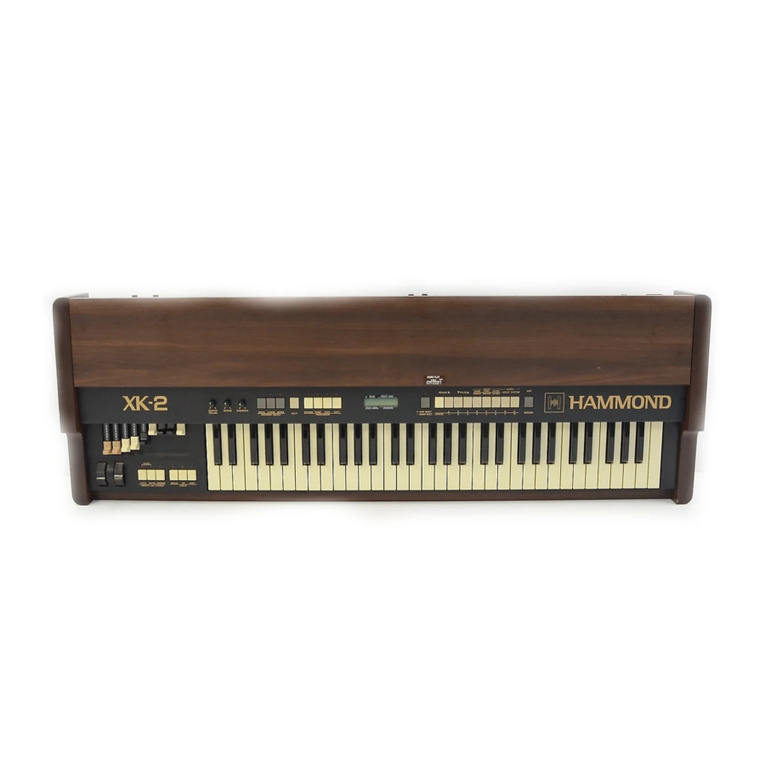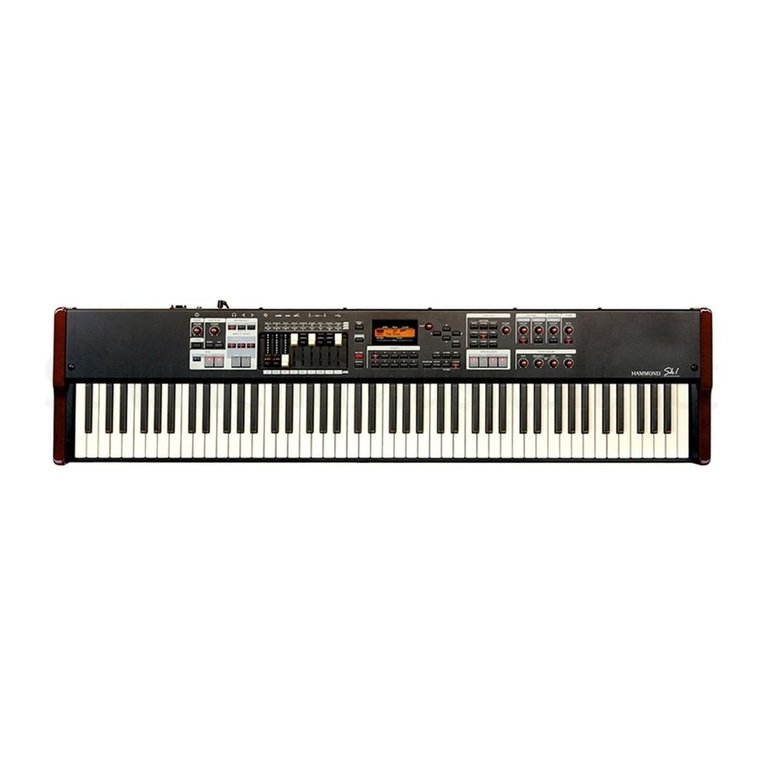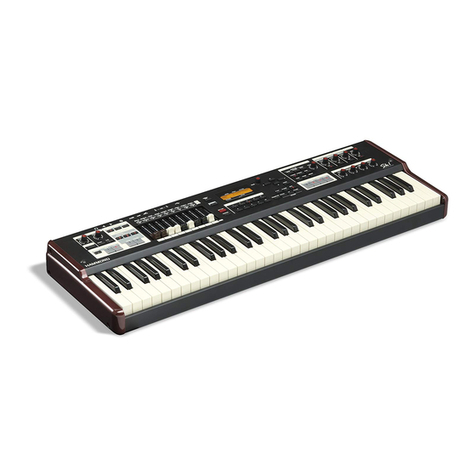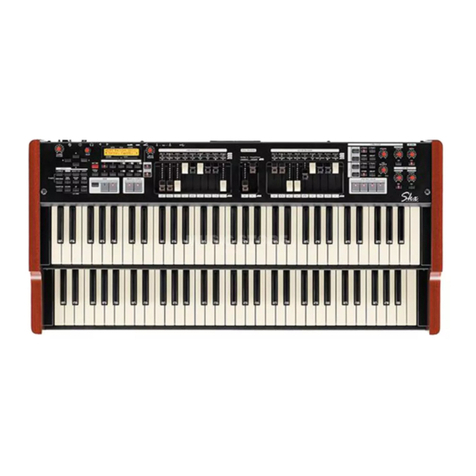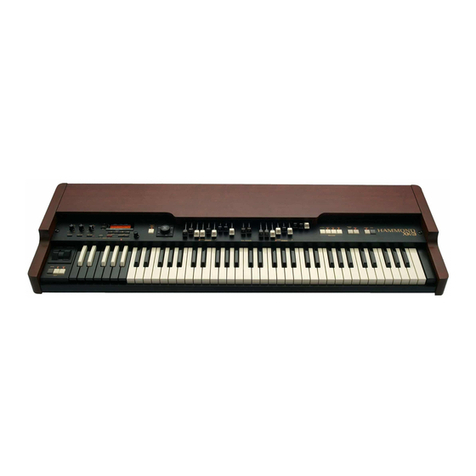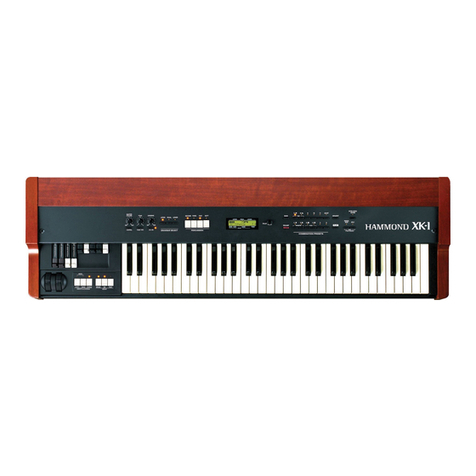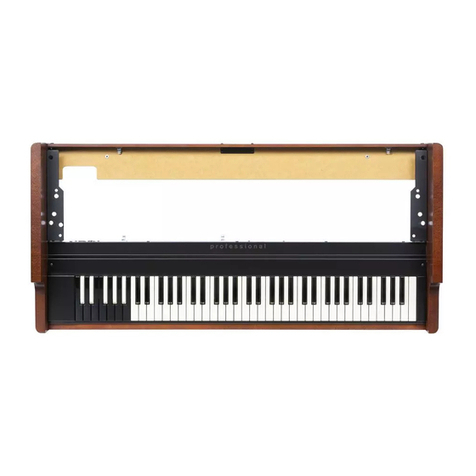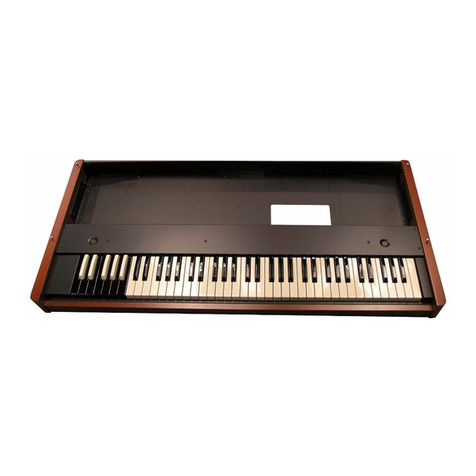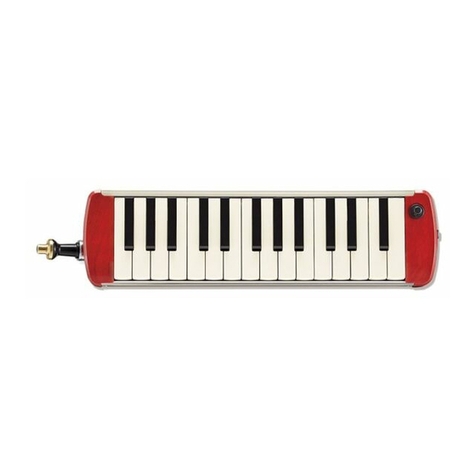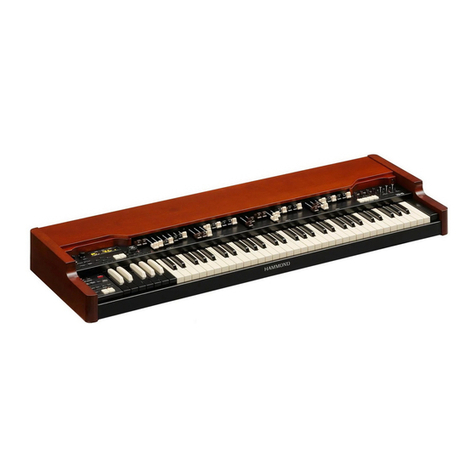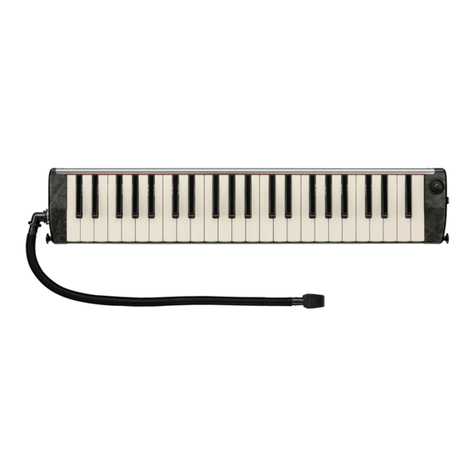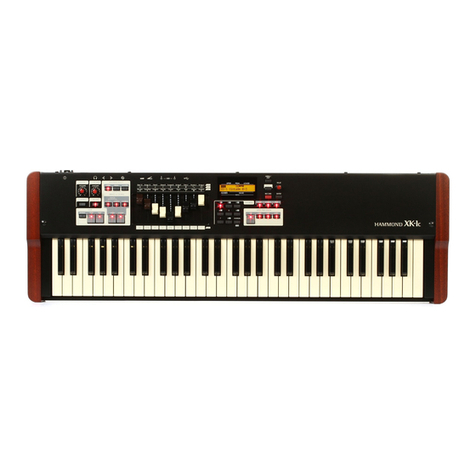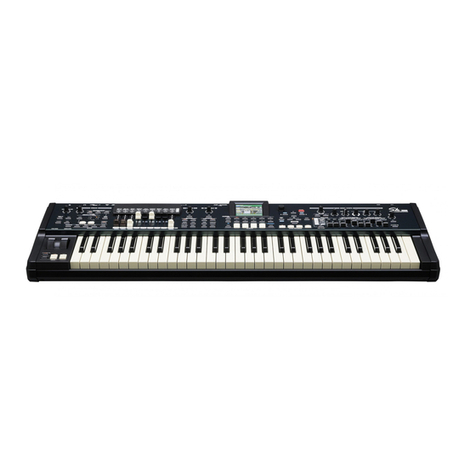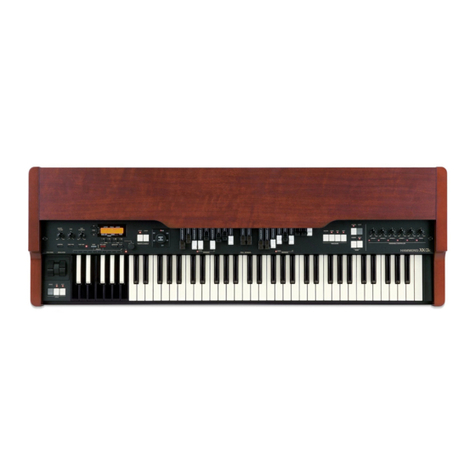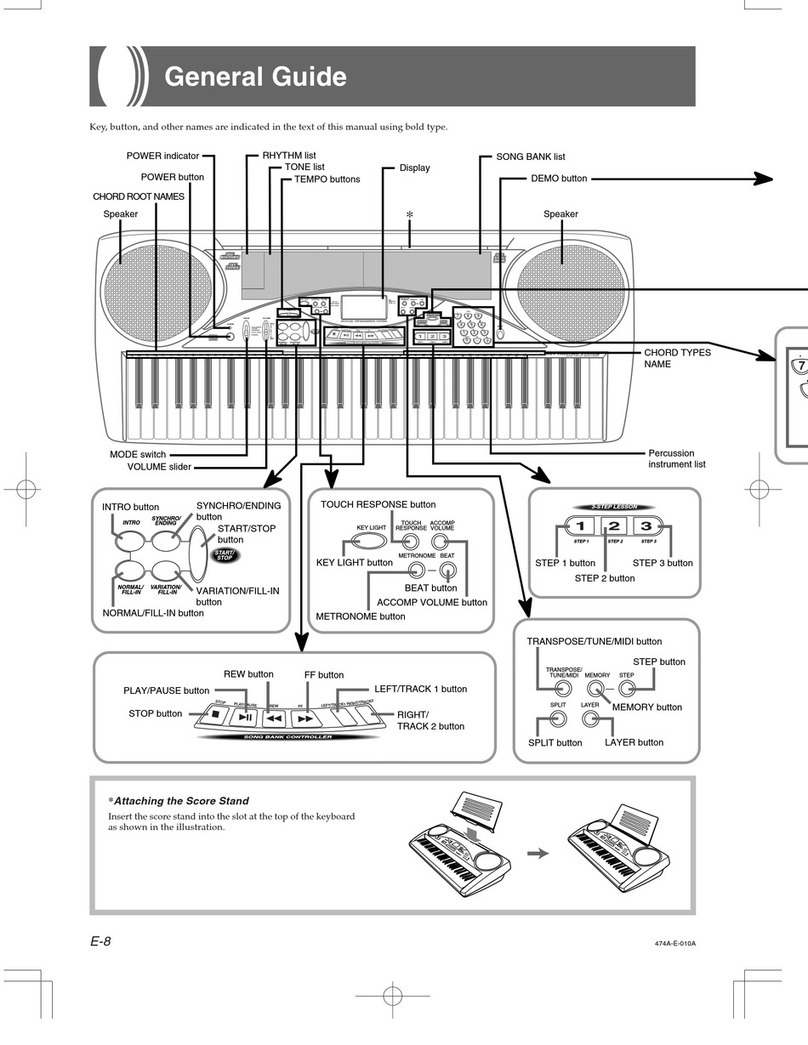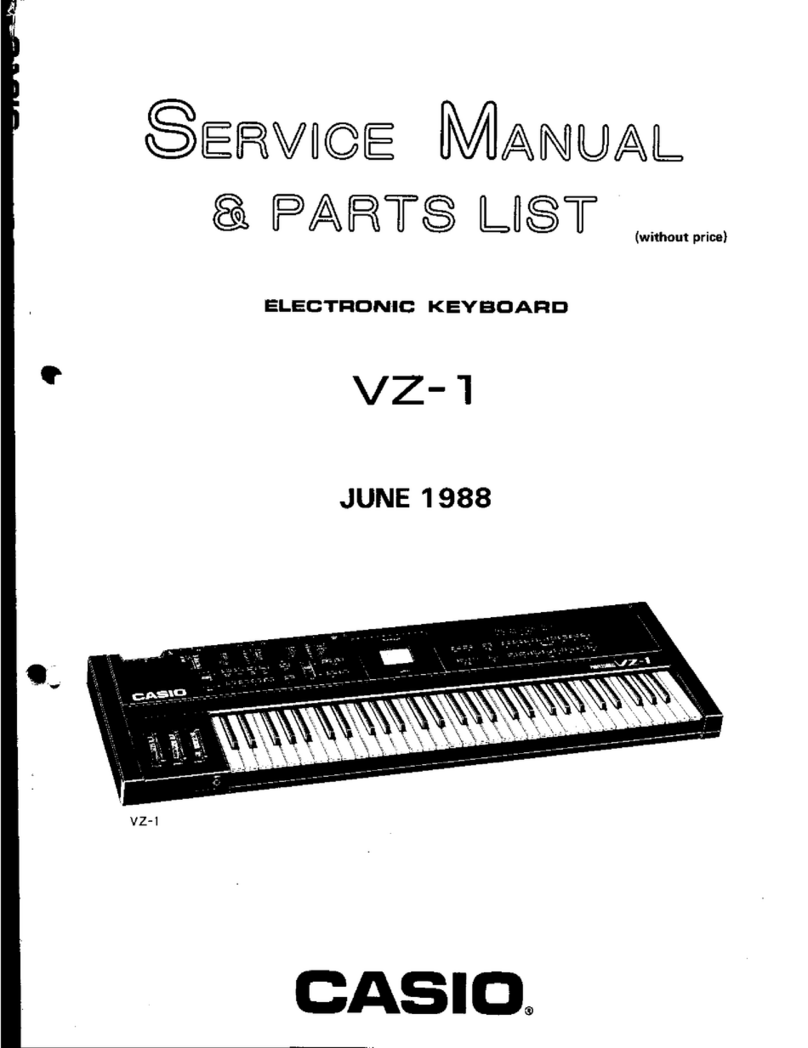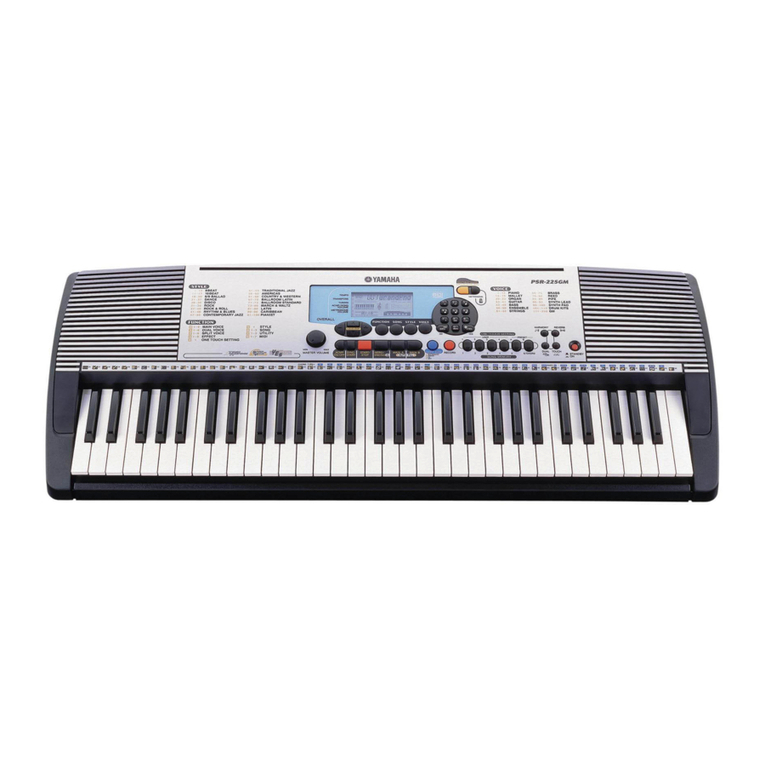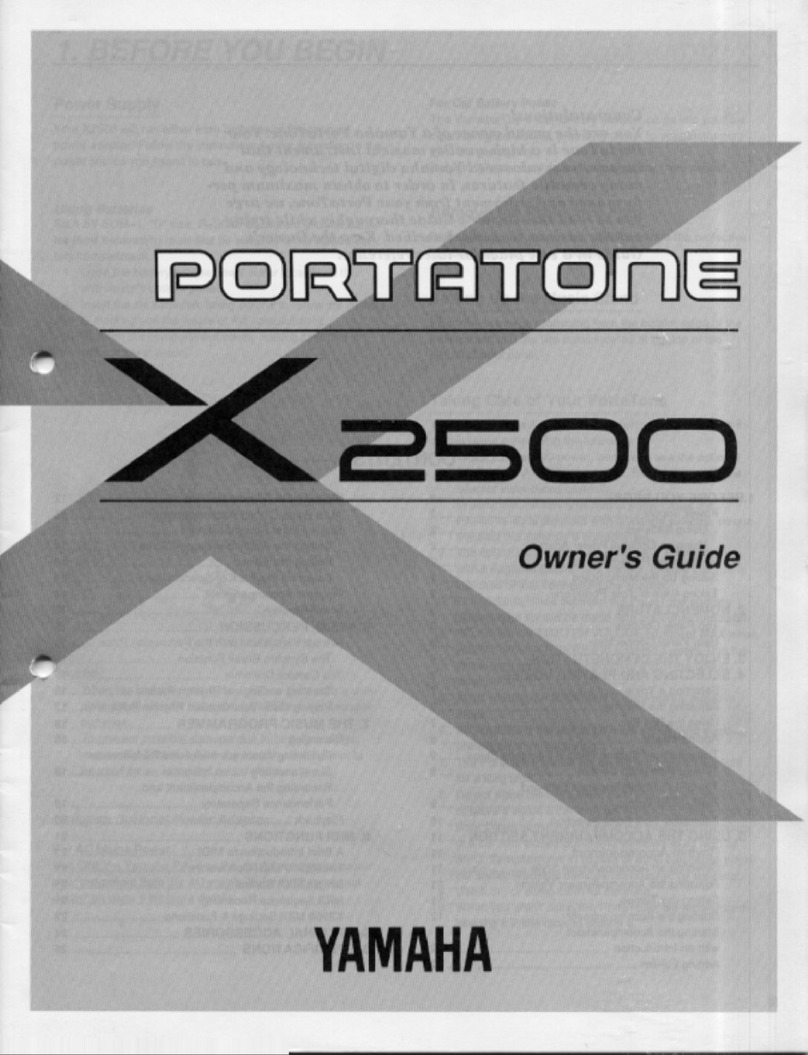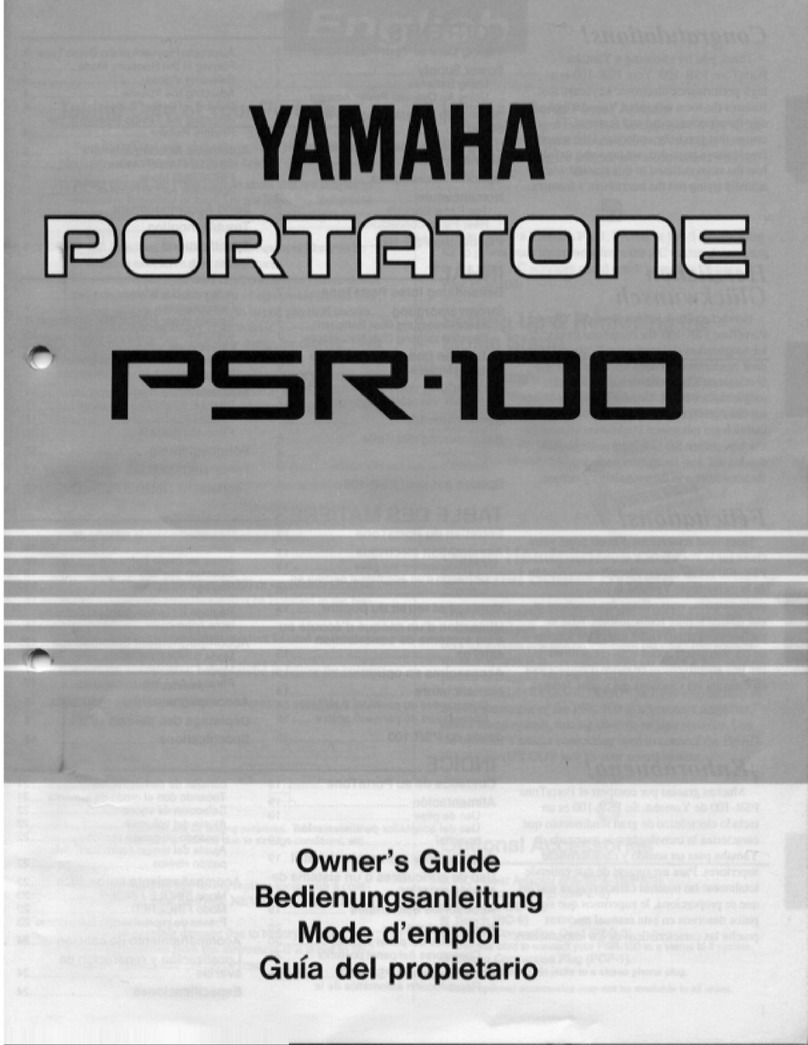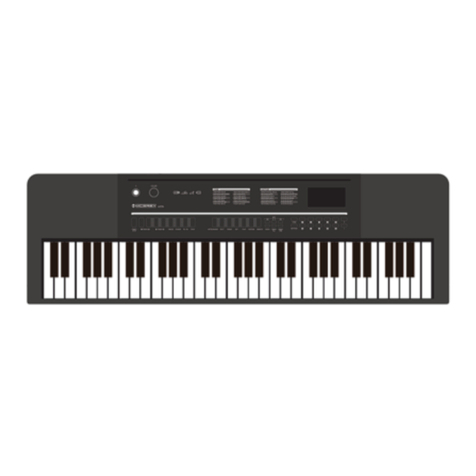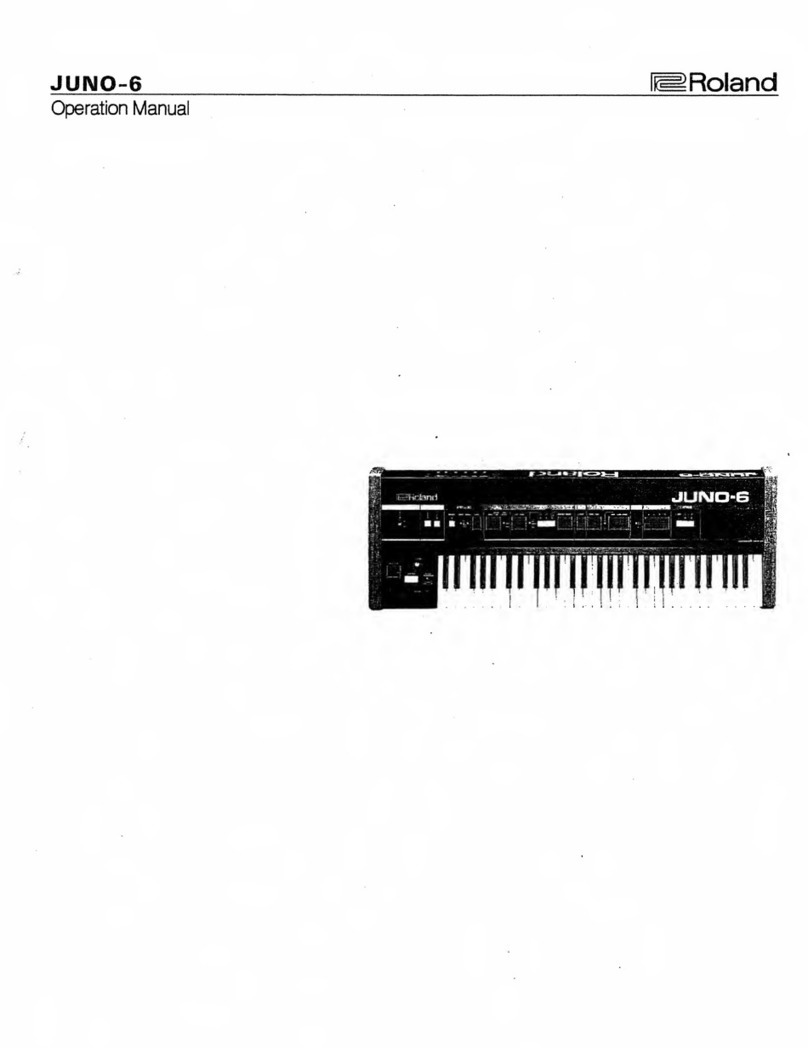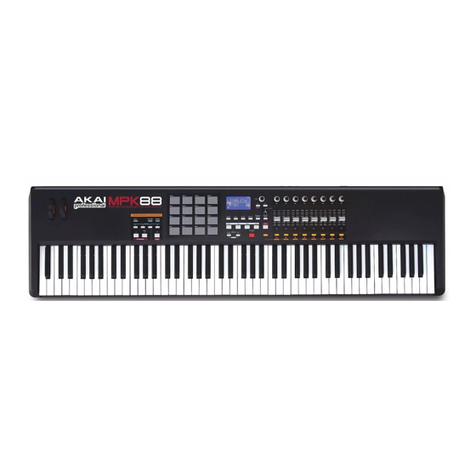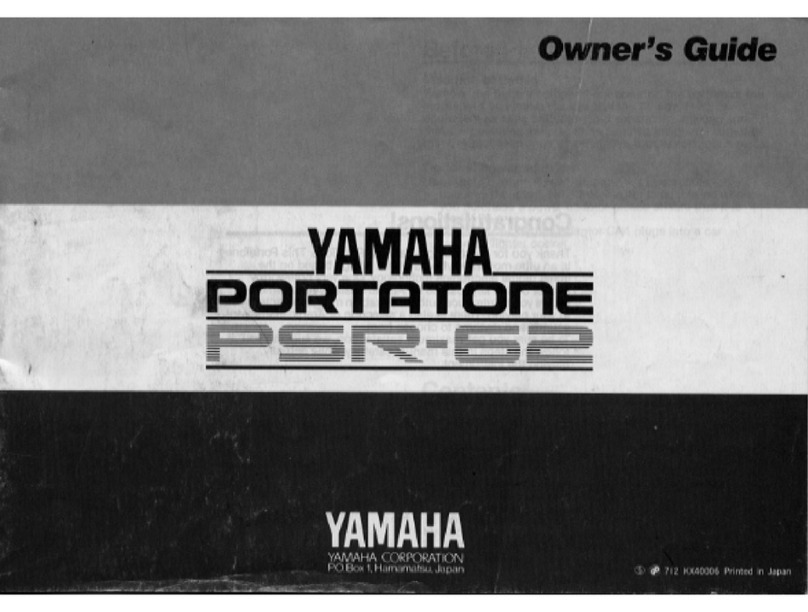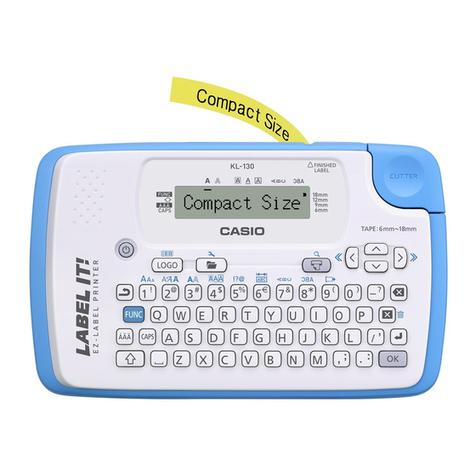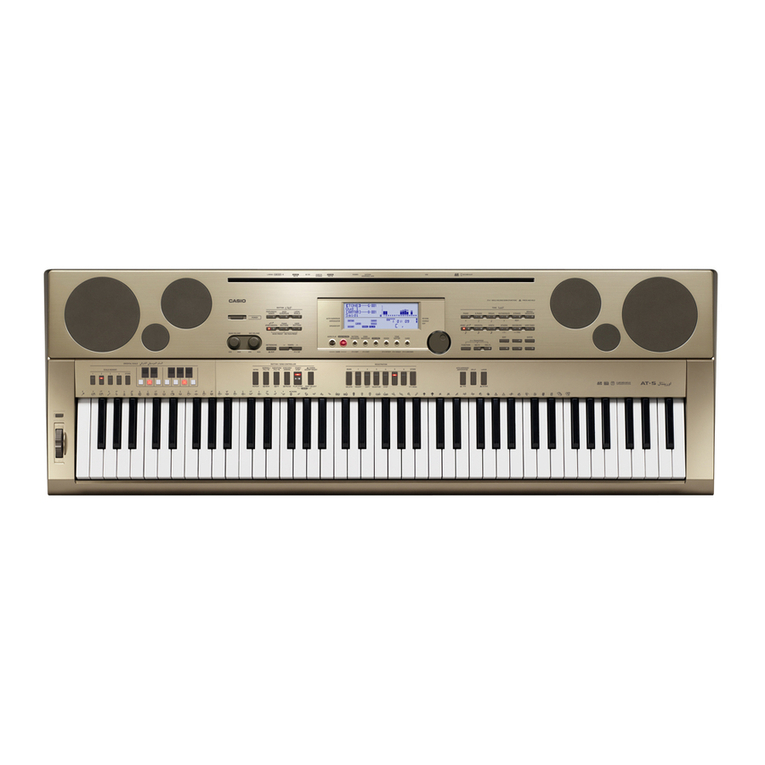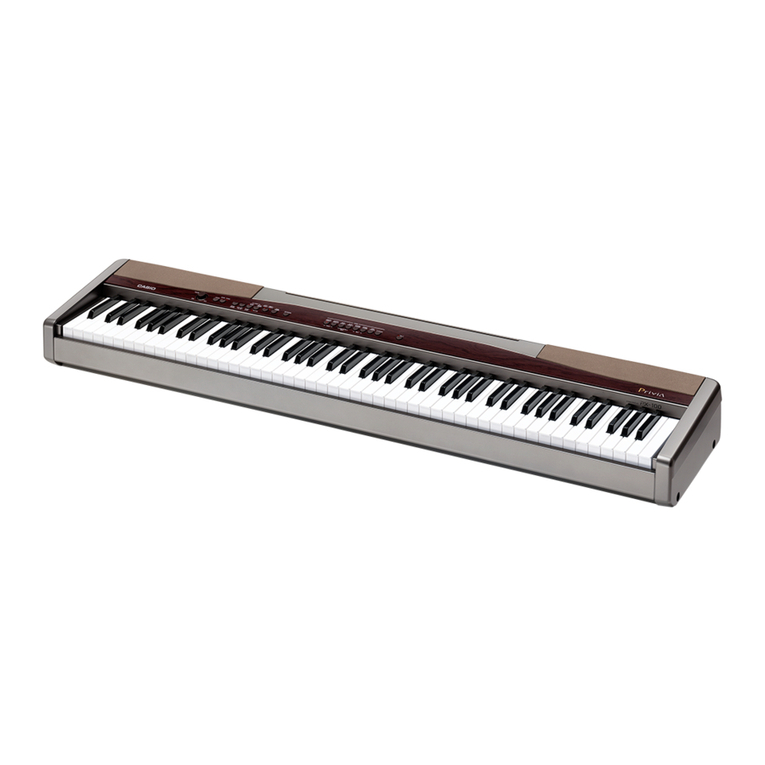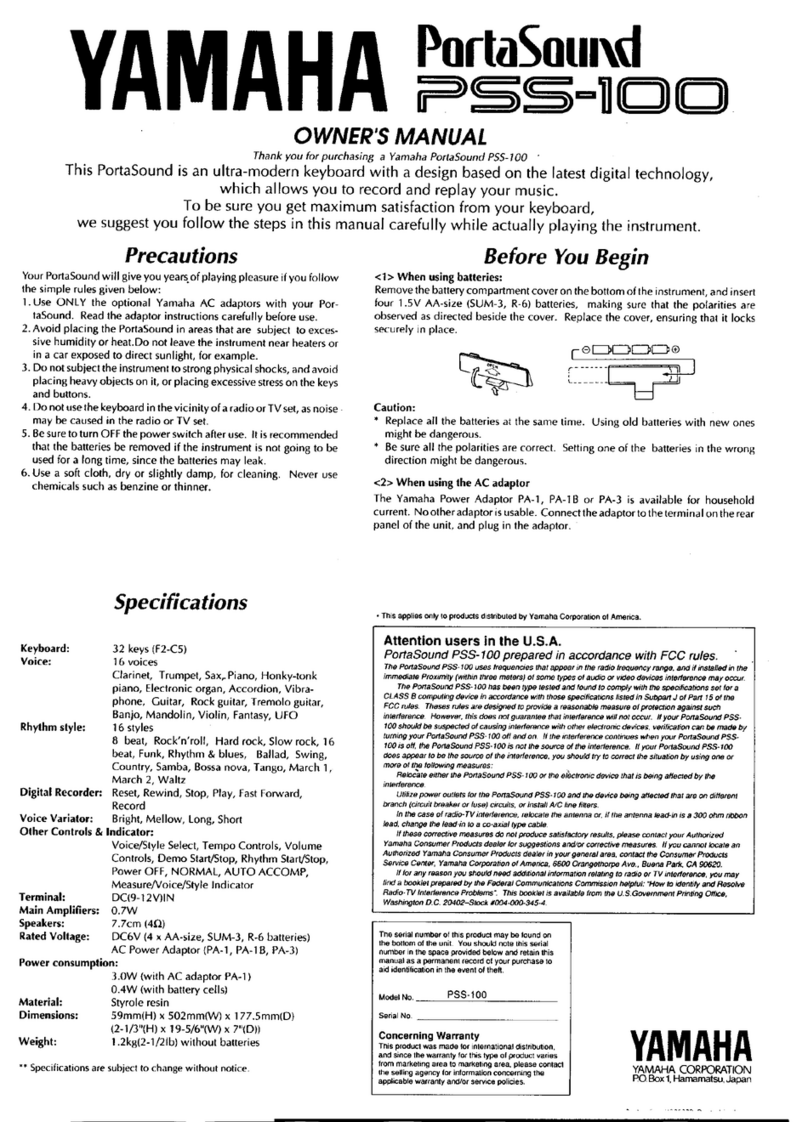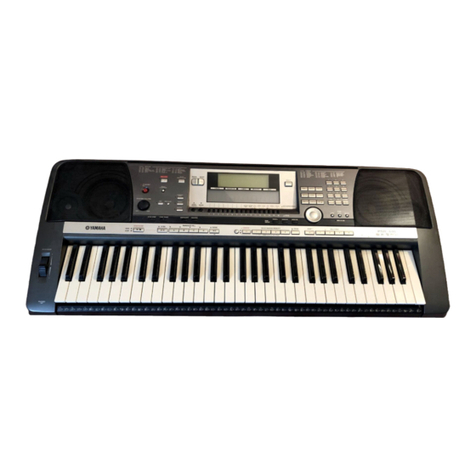
ORGAN Voice Section4
Now, we will add a Drawbar registration to the LOWER Part.
TRY THIS:
1. If the 3PART ORGAN button is not “ON,” press it to turn it “ON.” An orange LED will light and
the SPLIT button will also turn “ON.” This is necessary in order to hear the LOWER
Registration.
2. Press the LOWER button in the DRAWBAR SELECT button section to turn it “ON” (LED lit).
3. Create a Drawbar registration - for example, 00 8400 000. You can confirm the registration by
consulting the Information Center Display.
4. Play some notes on the lower portion of the keyboard. You will hear the notes play with the
Drawbar registration you just set up.
Finally, here is how to add a Pedal or Bass registration.
TRY THIS:
1. Press the PEDAL button in the DRAWBAR SELECT button section to turn it “ON” (red LED lit).
2. Create a Pedal Drawbar registration - for example, 60 0000 000. You can confirm the
registration by consulting the Information Center Display.
NOTE: The Pedal tones are created by using ONLY the first brown Drawbar and the first white
Drawbar. This is explained in more detail on page 170.
3. Press the PEDAL TO LOWER button to transfer the Pedal tones to the manual and play some
notes on the left end of the manual. You will now hear the notes play with Pedal tones added.
uPlease Read
On the SK PRO, Drawbar Parameter changes for the PEDAL Part (“P”) will not be heard unless both the 3
PART ORGAN, Split and PEDAL TO LOWER buttons are “ON” or a MIDI Pedal clavier is connected.
Notice that only two (2) Drawbar settings are shown for the Pedals in the Information Center Display. On
most Hammond Organs with two manuals and pedals, there are two Drawbars for controlling the Pedal
tones - one at “16'" pitch and the other at “8'” pitch. The SK PRO recreates this by using the Sub-
Fundamental Drawbar (marked “16'”) and the Fundamental Drawbar (marked “8'”) to control the Pedal
sounds. For more information consult page 170.
